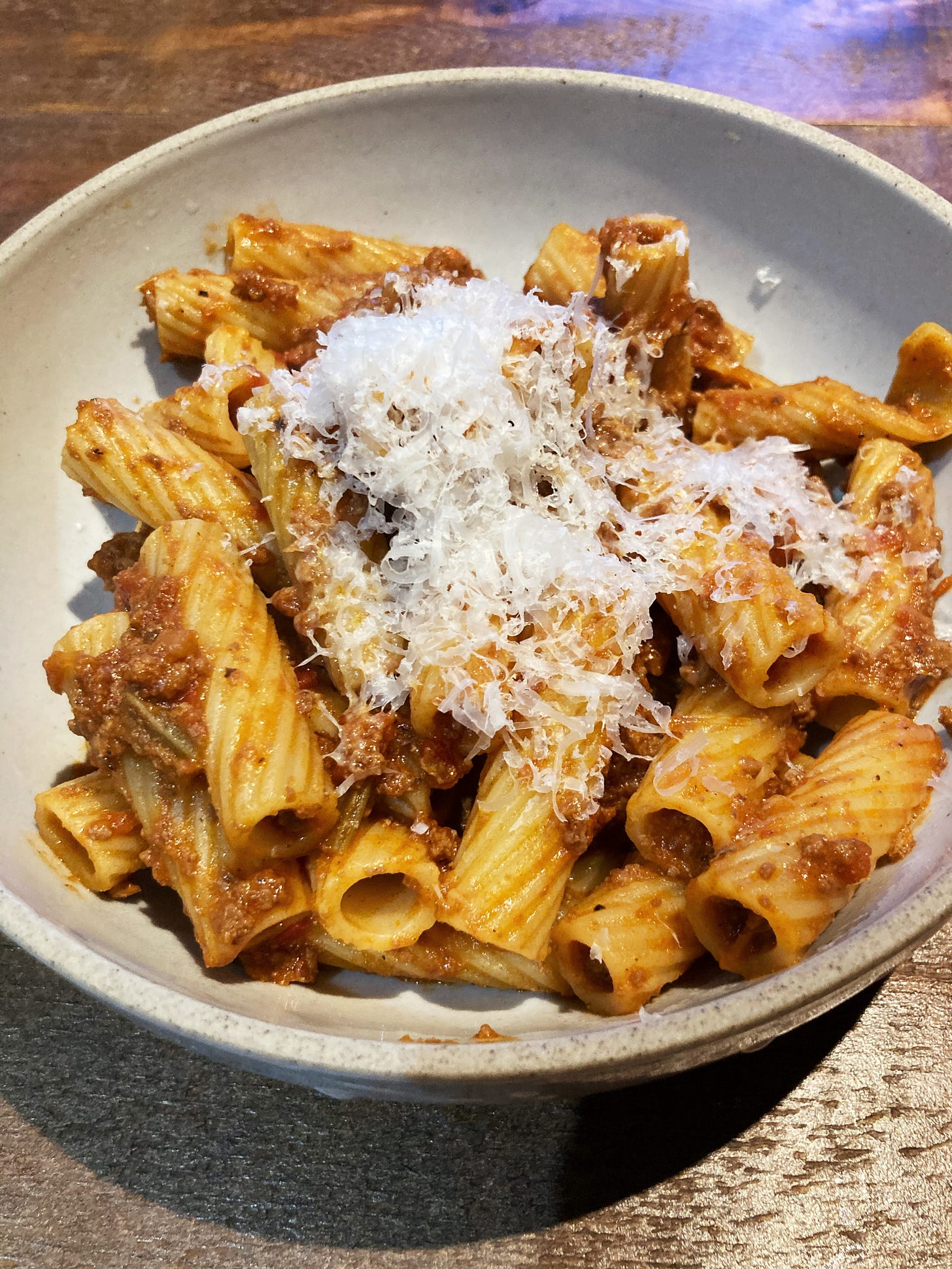Bolognese, and the rewards of taking your time.
Adapted from: ragù alla bolognese, the classic Italian meat sauce.
Impatience is rarely rewarded in the kitchen, and yet, I indulge the vice: rushing into cooking instead of doing a proper mise-en-place, eyeballing ingredients instead of measuring them out, combining steps to avoid dirtying another spoon or pot. Each shortcut has its trade-off, a price to pay for the convenience—an essential ingredient forgotten, a texture not-quite achieved. Each time, I scold myself for not doing things properly, and swear to commit to the recipe next time. When that occasion rolls around, I’ve usually already forgotten.
But these days, I’m not in a rush to finish anything. In lockdown, time has become a currency to spend, a resource that feels so abundant I’m willing to give it away. An hour to a walk here, a couple of hours to a movie, there. I’ve picked up long, intricate knitting projects ("I can think of no other activity that punishes cheating or impatience so brutally,” writes Carrie Battan) and beat personal records for time spent on my phone. One day, as I edge closer to my sense of mortality, I’ll look back on this time and be ashamed of the way I’ve squandered it away. For now, it feels like the transactions necessary to survival.
This week, bolognese felt like the perfect project. Few ingredients to gather, minimal prep work, a simple dish that is predicated on the quality of its ingredients, a devotion to stirring, and, most importantly, time. At least four hours, the recipe said. I was happy to hand them over.
Every part of a bolognese recipe requires patience and rewards you for it. There’s the slow ripening of tomatoes before they make it into the can. There’s the sweetness you get from the sofrito when you sweat everything properly, instead of tossing them around for a quick browning. There’s the way the milk cooks down to enrich the sauce and tenderize the meat, absorbing the sharpness of the nutmeg until it becomes a comforting depth and nothing more. Then, there are the hours in which the sauce sits at the slowest of simmers, barely doing anything at all.
It’s in these hours that the alchemy of cooking happens: the parts become the whole, the edges are rounded off, and the result is the smooth, rich sauce of our most golden memories. It’s an experience I wouldn’t want to cheat myself of. And that, in itself, might be the lesson.
Recipe notes
Marcella Hazan’s Bolognese Sauce
from “The Essentials of Classic Italian Cuisine”
There doesn’t seem to be a definitive recipe for bolognese, but in my house, Marcella Hazan reigns supreme. I followed this recipe to the letter, stopping at 3 hours of simmer time (the minimum recommended) due to hunger. I learned after the fact, from the Wikipedia page for bolognese, that the traditional pasta served with it is tagliatelle. However, the pages notes generously, “Acceptable alternatives to fresh tagliatelle include […] tube shapes, such as rigatoni and penne.”
I’ll take it.
What kitchen projects have been occupying your attention? What recipes should I devote myself to?
Until next time,
Tracy 🍝


